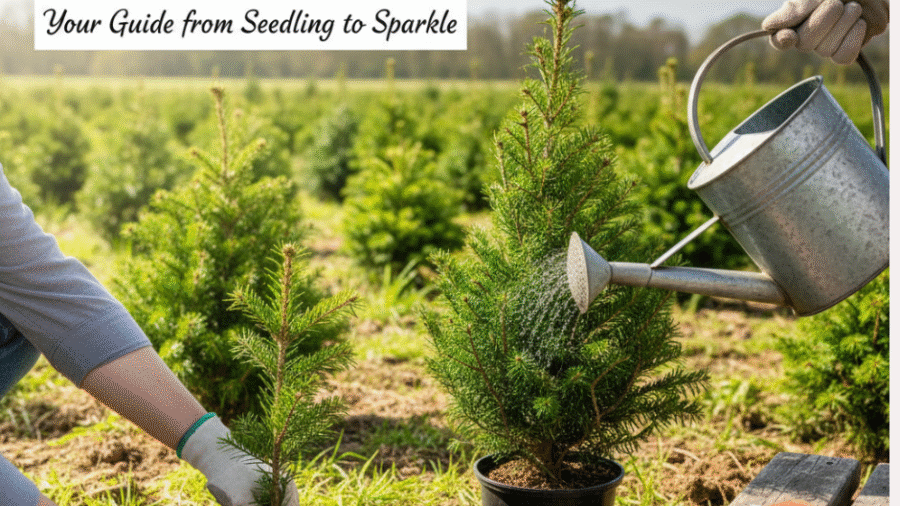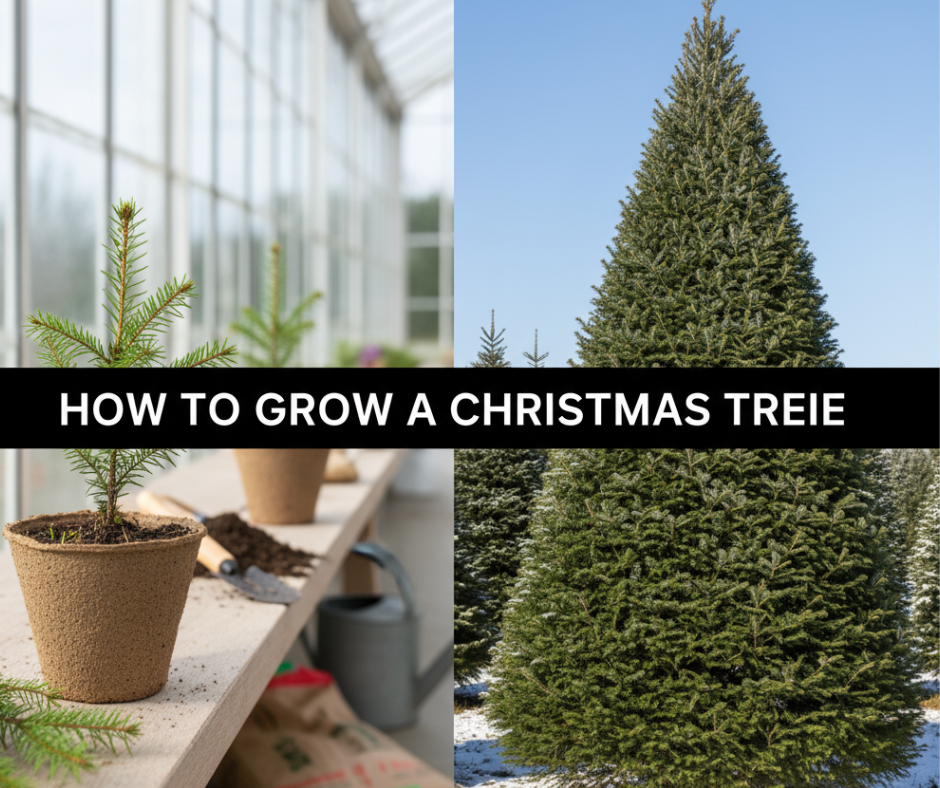The Christmas tree is a quintessential element of holiday traditions worldwide, but have you ever thought about growing your own? Growing a Christmas tree can be a rewarding and enjoyable experience, connecting you more deeply with nature and the festive season. While the process requires patience and care, it’s accessible to gardeners and enthusiasts willing to invest the time and effort.
This comprehensive guide will walk through how to grow a Christmas tree from selecting the right species and site to planting, nurturing, and harvesting your very own holiday centerpiece.
Choosing the Right Christmas Tree Species
The first and crucial step is selecting a species suited to your climate, soil, and personal preference. Popular Christmas tree species include:
-
Fraser Fir (Abies fraseri): Known for its excellent needle retention, fragrant scent, and strong branches.
-
Nordmann Fir (Abies nordmanniana): Valued for dark green needles that hold well and slow needle drop.
-
Douglas Fir (Pseudotsuga menziesii): A classic tree with soft needles and pleasant aroma.
-
Norway Spruce (Picea abies): Traditional choice but needles may drop faster.
-
Balsam Fir (Abies balsamea): Fragrant with good needle retention, native to North America.
Each species has specific climate tolerances and growth habits. Choosing the right species is vital for successful growth and a healthy tree.
Selecting the Ideal Planting Site
Christmas trees thrive best on sites with:
-
Well-drained, fertile soil: Avoid low-lying frost pockets and excessively dry or sandy soils. A deep loamy soil rich in organic matter is ideal.
-
Good sun exposure: Most species prefer full sun to partial shade.
-
Protection from harsh winds: Trees grow better when shielded from prevailing winds.
-
Adequate space: Ensure room for trees to grow to their mature size, with proper spacing to avoid overcrowding.
Avoid gullies, ditches, and clay-heavy areas prone to waterlogging. The right site minimizes pest and disease problems and supports healthy root and canopy development.
Planting Your Christmas Tree Seedlings
You can start growing Christmas trees from:
-
Seeds: Collect seeds from established trees or purchase from nurseries. Sow indoors or in seedbeds and transplant after 1-2 years.
-
Seedlings: Purchase young trees from a nursery for transplanting.
-
Cuttings: Less common but feasible with proper techniques.
When planting:
-
Dig holes wide and deep enough for roots to spread comfortably.
-
Space trees adequately—commonly 5-7 feet apart depending on species.
-
Plant seedlings straight and at the same soil depth as they grew previously.
-
Firm soil around the roots and water thoroughly.
Planting is ideally done in early spring or fall when temperatures are mild.
Caring for Your Growing Christmas Tree
Young Christmas trees require attentive care:
Watering
Newly planted trees need consistent watering, especially in dry periods. Water deeply to encourage deep root growth but avoid waterlogging.
Weed Control
Weeds compete with seedlings for nutrients and water. Use mulch and manual or chemical controls to keep weeds at bay.
Fertilization
Soil tests can guide fertilization. Too much nitrogen leads to excessive growth but weak branches; balanced nutrients support healthy, sturdy trees.
Pruning and Shearing
Start pruning to shape the tree around 3-5 years of age. Trim lateral branches to maintain the classic conical shape and remove competing central leaders for a single strong leader to emerge.
Prune only current year’s growth to stimulate bushiness and even branch spacing. Proper pruning improves the tree’s market value and visual appeal.
Managing Pests and Diseases
Christmas trees can be vulnerable to insects like aphids, adelgids, and weevils, as well as fungal diseases. Preventative steps include:
-
Selecting disease-resistant species or cultivars.
-
Promoting good air circulation by proper spacing.
-
Monitoring regularly for pest presence.
-
Applying eco-friendly treatments or consulting professionals as needed.
Early detection and integrated pest management are key to maintaining healthy plantations.
Harvesting Your Christmas Tree
Most Christmas trees take 7 to 10 years to reach marketable height (6-7 feet).
-
Plan your harvest to coincide with early winter before needle drop becomes excessive.
-
Cut the tree angled at the base to facilitate water absorption once brought indoors.
-
Handle carefully to avoid damage to branches and needles.
Growing a Christmas Tree at Home in a Pot
For those with limited space, growing a Christmas tree in a container is possible, although growth will be limited.
-
Choose smaller species or dwarf cultivars.
-
Use large pots with well-draining soil.
-
Water regularly and provide ample light.
-
Move outdoors when possible in warmer months.
-
Repot as the tree grows.
Environmental Benefits of Growing Your Own Tree
Home-grown Christmas trees contribute positively by:
-
Supporting biodiversity by providing habitats.
-
Acting as carbon sinks during growth.
-
Reducing carbon footprint compared to imported trees.
Growing your own tree also fosters a deeper appreciation for the environment and sustainable holiday traditions.
Read More: How Are the King of Christmas Trees? Exploring the Most Popular and Prestigious Christmas Trees
Conclusion
Growing a Christmas tree is a fulfilling process blending horticulture, patience, and holiday spirit. With the right species, site, and care practices, anyone can cultivate beautiful evergreen trees that decorate homes for years to come.
For a detailed guide on establishing and managing Christmas tree plantations, visit the NC State Extension article: Establishing a Christmas Tree Plantation | NC State Extension .



Add a Comment